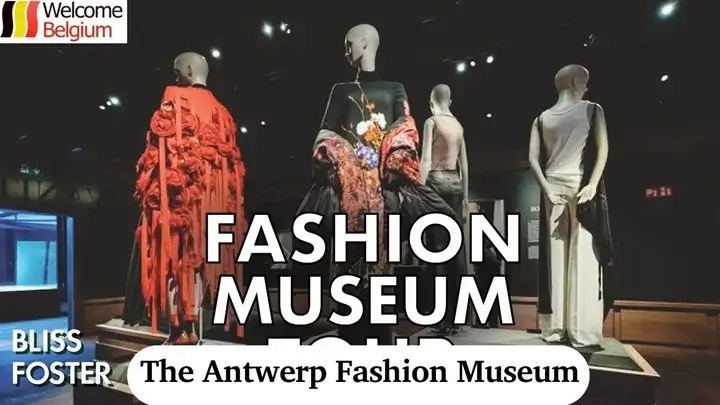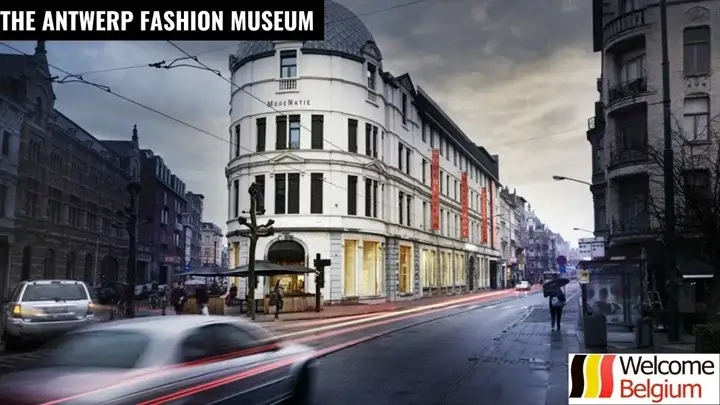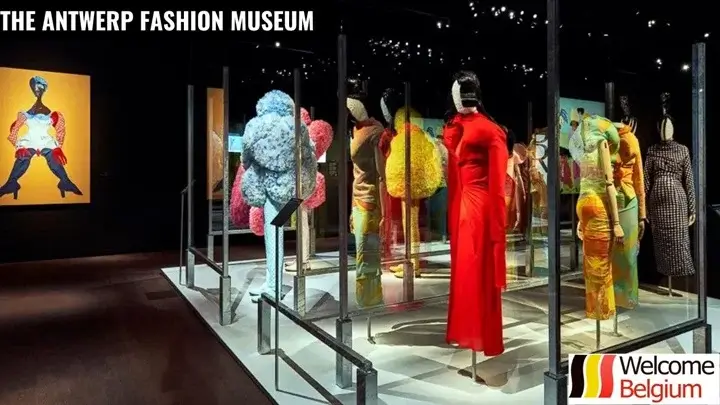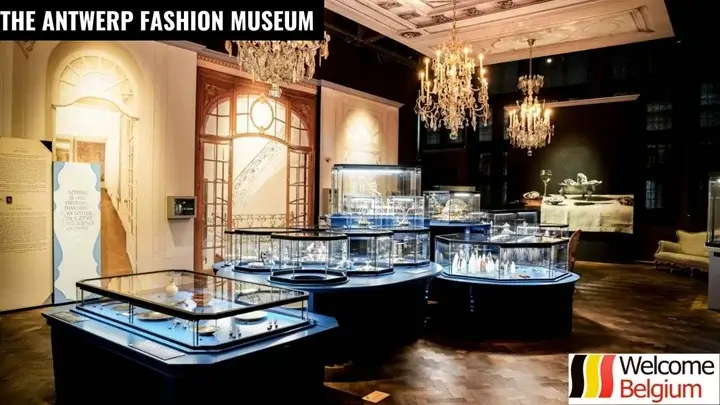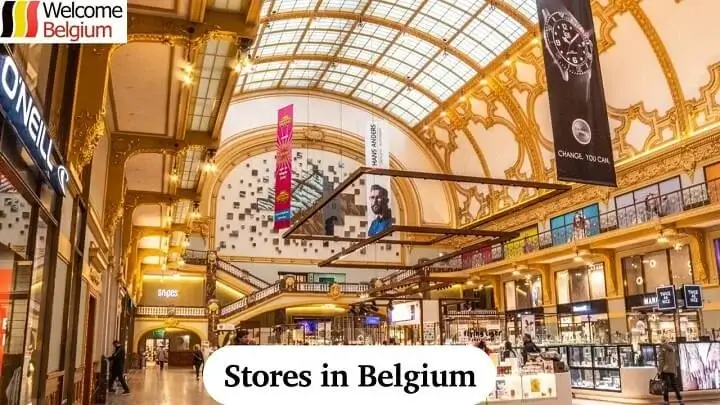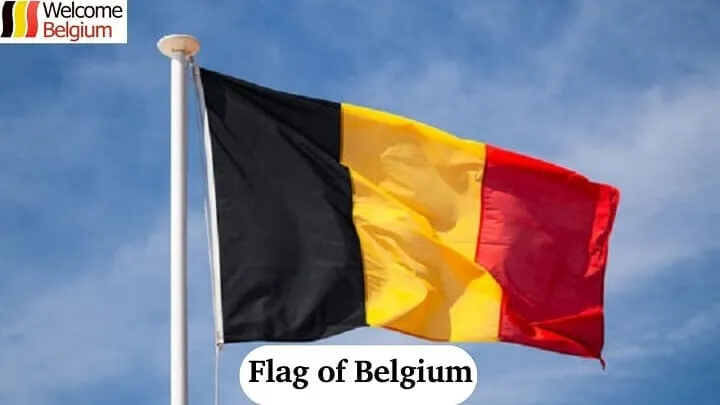Antwerp, known as one of Europe’s most important fashion centres, has long deserved a space where its fashion heritage could be preserved and presented to a wider audience. The idea for a fashion museum arose against the backdrop of growing interest in Belgian designers who have gained international recognition in recent decades.
Particularly notable are the graduates of the Royal Academy of Fine Arts Antwerp, among whom are real world stars such as Dries Van Noten , Ann Demeulemeester and Walter van Beirendonck . It was this talented group of designers who pushed the city to create a museum that would be a meeting place for history, creativity and the latest fashion trends.
History of the creation of the museum
In 2002, the Antwerp Fashion Museum ( MoMu ) opened in Antwerp, the result of a long-standing effort to preserve and showcase the region’s fashion industry. Situated in the heart of the city, the museum offers visitors both retrospectives of famous Belgian designers and temporary exhibitions on current trends. The main goal of MoMu is to show the multi-layered nature of fashion: from traditional crafts and costume to modern technology and innovative solutions. The museum has become not only a place for archiving, but also a platform for discussions, lectures and interactions between industry professionals.
The museum offers visitors:
- Permanent exhibitions dedicated to the history of Belgian fashion.
- Temporary exhibitions of international and local designers.
- Archives with unique collections of costumes and textiles.
- Lectures and master classes with the participation of famous designers.
- Spaces for young fashion designers to present their work.
Thus, MoMu is not just a museum, but a dynamic platform that promotes the development of fashion and supports the next generation of designers. Every aspect of the museum is designed to immerse visitors in the world of fashion, history, and the latest innovations in this field. MoMu actively collaborates with international fashion institutes, universities and museums, which makes it a center of attraction for fashion professionals and lovers from all over the world.
Since its opening, the Fashion Museum has continued to develop into a true cultural hub. Its influence extends far beyond Antwerp: the museum plays an important role in shaping the public perception of fashion as an art. Constantly updating its exhibitions and regular international projects allow the museum to remain relevant and stimulate discussions about the role of fashion. MoMu has become part of the cultural landscape of Belgium, and its contribution to the development of the fashion industry cannot be overestimated.
Why You Should Visit the Mayer Van Den Bergh Museum
Rubens House Museum in Antwerp, Collection and Interesting Facts
Royal Museum of Fine Arts Antwerp, interesting facts
Collection overview
The collection of the Antwerp Fashion Museum ( MoMu ) is internationally significant and diverse, reflecting both the rich history of Belgian fashion and its contemporary developments. The collection covers many aspects of fashion, from traditional costumes and fabrics to innovative designs by contemporary designers. The museum actively expands its collection by acquiring both historical and contemporary works, which allows it to remain relevant and interesting to both specialists and the general public.
Fashion department
One of the collection’s special features is its emphasis on the work of Belgian designers, especially the “Antwerp Six” – a group of graduates of the Antwerp Academy of Fine Arts who gained international recognition in the 1980s. Dries Van Noten , Ann Demeulemeester , Walter van Beirendonck and other members of the group are represented in the museum’s collection with their most iconic garments and collections. These works reflect the experimental and innovative approach to design that has become a hallmark of Belgian fashion.
MoMu collection includes:
- Traditional costumes and accessories from different historical periods, starting from the 18th century.
- Archives of fabrics and textiles, which include rare examples of both Belgian and international origin.
- Modernist and avant-garde outfits highlighting the influence of Belgian fashion on the global industry.
- Exhibits dedicated to the history of lace, one of the most important traditional crafts of Belgium.
- Designs by renowned international fashion designers, demonstrating the links between Belgian fashion and international craftsmen.
The museum also stands out for its archives, which contain unique examples of clothing and accessories. These archives are open not only to researchers but also to the general public, allowing for a better understanding of the evolution of fashion. The emphasis on textiles, which include both modern innovative fabrics and rare historical examples, makes it possible to trace how technology and materials have influenced the development of the fashion industry.
MoMu collection continues to grow and reflects both historical heritage and the latest fashion trends. Importantly, the museum actively works with contemporary designers, organizing temporary exhibitions and providing space for experimental projects. This makes the collection a living and dynamic tool for studying fashion, which is especially important in the constantly changing world of the fashion industry.
Makeup and jewelry
The collection of make-up and jewellery at the Antwerp Fashion Museum ( MoMu ) is part of an exhibition that complements the idea of fashion as a complex phenomenon. These objects help to reveal the cultural and social aspects of beauty and style, showing that fashion is not only about clothes, but also includes means of self-expression through make-up and accessories.
MoMu collects and exhibits a variety of makeup products, demonstrating how ideas about beauty and aesthetics have changed over the centuries. The collection includes both vintage makeup kits and more modern examples that show the evolution of cosmetic products and technology.
Collection of makeup and jewelry:
- Historical cosmetic sets include powders, lipsticks, and perfumes from the 18th and 19th centuries, highlighting how women of the time used makeup to create a particular look. These items are often presented in luxurious, handcrafted boxes and cases.
- Cosmetics from the 20th century, including brands that became symbols of certain eras, such as the red lipstick that was popular in the 1940s or the pastel eyeshadow that became popular in the 1960s.
- Historical jewelry such as earrings, necklaces, and bracelets show influences from different eras and styles, including Baroque, Rococo, and Art Deco . Many of these pieces are made of precious metals and stones, which highlight the status and wealth of their owners.
- Contemporary designer jewellery, created by both Belgian and international designers, reflects innovative approaches to the use of materials. Fashion houses and jewellers experiment with metal, plastic, textiles and even recycled materials to create unique works of art.
We recommend that you pay attention to jewelry created by Belgian designers. For example, Ann Demeulemeester and Dries Van Noten , known for their experimental approaches to fashion, often include unique jewelry in their collections, which allows us to consider their works as holistic images, where clothes, accessories and jewelry work in harmony.
MoMu’s makeup and jewelry collection plays an important role in demonstrating how fashion encompasses not only clothing but all aspects of visual expression. These pieces show how people have used makeup and jewelry to create identity, status, and image, reflecting social and cultural changes. The attention to detail in these collections helps to further understand aesthetic and technological trends in the fashion industry.
The Fashion Museum Antwerp’s collection of make-up and jewellery therefore not only highlights the importance of accessories and cosmetics in the world of fashion, but also serves as a source of inspiration for designers, researchers and art lovers who want to understand how fashion has been shaped and developed over time.
Contacts, directions, ticket prices and opening hours
Address: Nationalestraat 28, 2000 Antwerp , Belgium .
Contact details:
- Phone: +32 (0)3 470 27 70.
- Email: info@momu.be.
- Official website: https://www.momu.be.
How to get there:
- By public transport. By train: to Antwerp Central Station, from there you can take tram #3, #5, #9 or #15 to the stop ” Meir “. Then walk for 10-15 minutes along Nationalestraat . Tram: routes #3, #5, #9 and #15 – the nearest stop is ” Meir “. From there it is only a 10-15 minute walk to the museum. Bus: bus stops are located next to the museum, routes 22, 180, 181, 182, 183, 290, 291 and 295 go to stops next to the museum.
- By car. The museum is located in the center of Antwerp, on the Nationalestraat street . You can use parking nearby, for example at « Parking Brabo » or « Parking Groenplaats ». Be prepared for the fact that the city centre is a limited traffic zone, so check the parking options in advance.
- On foot. Exit at Groenplaats square . When you are at the square, go towards Nationalestraat street .
- Turn left and walk down Nationalestraat . Walk a little and you will see MoMu on the right side.
The museum is open from Tuesday to Sunday, from 10:00 to 18:00. Closed on Mondays, as well as on January 1, December 25 and on the day of major city events.
Ticket prices:
- Adults: €12.
- Concessionary tickets (students, pensioners, people with disabilities): €8 .
- Young people under 18: free admission.
- Group visits (from 15 people): €8 per person.
- Every first Sunday of the month: admission is free for all categories of visitors.
The museum also offers special programs and tours for groups, and hosts temporary exhibitions that may require separate tickets.
The Antwerp Fashion Museum ( MoMu ) is not only a repository of the rich heritage of Belgian fashion, but also a living centre for research, education and inspiration. Its unique collections, including both historical and contemporary pieces, allow visitors to immerse themselves in the exciting world of fashion, which is constantly changing and evolving.
With regular exhibitions, educational programs, and designer engagement, MoMu remains a relevant and meaningful destination not only for fashion lovers, but also for a wider audience seeking to understand how fashion shapes our society and culture. A visit to the museum is not only a journey into the past, but also a glimpse into the future of the fashion industry, making it a must-see for any traveler interested in art and style.

